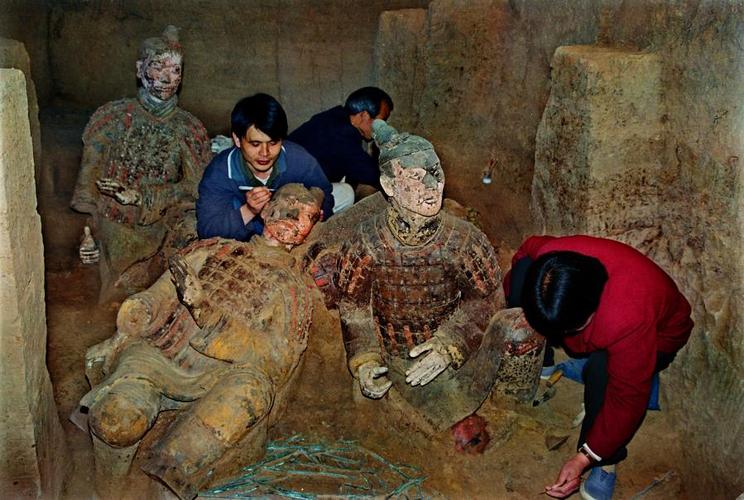
Are the Terracotta Warriors Still Being Excavated?
While thousands of terracotta warriors stand guard over the tomb of China's first emperor, Qin Shi Huang, thousands more remain buried underground. This begs the question: are the terracotta warriors still being excavated?
Unearthing an Army: Past, Present, and Future Excavations
The discovery of the Terracotta Army in 1974 captivated the world. Farmers digging a well stumbled upon fragments of clay, unaware they had unearthed one of the greatest archaeological finds of the 20th century. Since then, excavations have been ongoing, revealing a vast necropolis complex guarding the tomb of Emperor Qin Shi Huang.
Although only around 2,000 terracotta warriors have been excavated to date, more are being uncovered with each passing year. The painstaking work involves meticulously removing layers of earth, often by hand, to avoid damaging the fragile figures. Each warrior is unique, with individualized features, hairstyles, and armor, making the excavation process both exhilarating and demanding.
The sheer scale of the site presents a significant challenge. Experts estimate that over 8,000 terracotta warriors, along with horses, chariots, and other figures, could be buried within the complex. This suggests that excavating the entire army will be a long and complex endeavor.
Preserving the Past: Why the Excavation is Slow and Deliberate
Chinese archaeologists have adopted a cautious and deliberate approach to the excavation process. Several factors contribute to this measured pace:
- Fragility: The terracotta warriors, while impressive, are incredibly fragile. Exposure to air and light can cause rapid deterioration. Archaeologists must work carefully to preserve the paint pigments and prevent damage to the clay figures.
- Conservation Challenges: Developing effective conservation methods for the warriors' paint and materials is crucial. As new technologies and techniques emerge, they are carefully implemented to ensure the long-term preservation of these historical treasures.
- Funding and Resources: Large-scale archaeological projects require significant funding and resources. Balancing ongoing excavation with the need to conserve and protect the already unearthed artifacts requires careful planning and allocation of resources.
- Respect for the Dead: Chinese culture places great emphasis on respecting the dead and their final resting places. The excavation of Emperor Qin Shi Huang's tomb is a sensitive issue, and archaeologists are proceeding with caution, considering both scientific and cultural perspectives.
An Ongoing Legacy
The Terracotta Army excavation is not just about unearthing artifacts; it's about piecing together the history of a dynasty and understanding the beliefs and practices of ancient China. With each passing year, new discoveries add to our understanding of this remarkable period.
While the timeline for excavating the entire army remains uncertain, one thing is clear: the Terracotta Warriors will continue to fascinate and inspire generations to come. Their rediscovery has provided an invaluable glimpse into China's rich past, and the ongoing work promises to reveal even more secrets in the future.
FAQs
Are tourists allowed to see the excavated warriors?
Yes, several pits containing excavated terracotta warriors are open to the public. Visitors can marvel at these life-size figures and learn about their history at the Museum of the Terracotta Army, located near Xi'an, China.
Have any weapons been found with the terracotta warriors?
Yes, thousands of bronze weapons, including swords, spears, crossbows, and arrowheads, have been unearthed alongside the terracotta army. These weapons were remarkably well-preserved and offer insights into the military technology of ancient China.
What will happen to the warriors that haven't been excavated yet?
For now, the remaining warriors will continue to rest undisturbed. Chinese authorities are committed to preserving the site and are carefully considering the best approach for future excavations. The focus remains on ensuring the long-term preservation of this incredible historical treasure for generations to come.